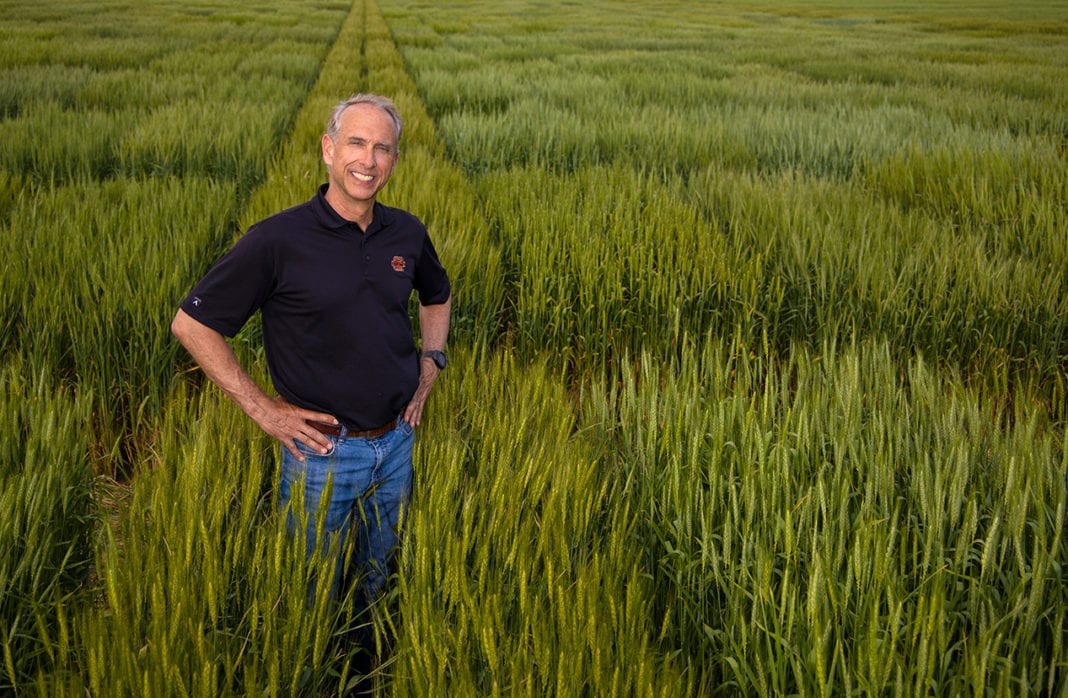One of the leading wheat geneticists in the country has enjoyed a particular real-life irony so much that he has run with it for 35 years.
Brett Carver, a regents professor and holder of the wheat genetics chair at Oklahoma State University, had never been west of the Mississippi River when he took a research and teaching job in Stillwater in 1985.
“There was a job opening here that fit my academic background to a T, except for one detail: I had never worked with wheat,” says the Georgia native, whose master’s and Ph.D. work at North Carolina State University focused on soybeans. “But I fell in love with the campus and the people. It’s a twist of fate that worked out.”
Carver leads a group of 10 OSU researchers with a simple name – the Wheat Improvement Team – which has developed many varieties of the crop to grow in different soils, topographies and climates. Members come from several departments: plant and soil sciences, entomology and plant pathology, and biochemistry and molecular biology.
Carver, only the fourth sanctioned wheat breeder in state history, built the team in 1998 after seeing OSU professors competing for the same grant money – about $350,000 annually – while trying to achieve the common goal of improving the quality and quantity of wheat in Oklahoma and the nation.
“There wasn’t a whole lot of synchronicity,” he says. “It was apparent that we could do a better job with the money being invested, so the concept occurred to me. We needed a team, so that’s what we did. The name was intentionally unpretentious. That’s how we operate. We come straight at you. We have nothing to hide. We’re a visible group of people with our research products.”
Carver says genetic combinations that the Wheat Improvement Team creates, studies, tests and harvests speed up mixings of plant varieties that have occurred for thousands of years.
For example, a priority for the team since climate change became prevalent in the past 20 years is developing drought- and disease-resistant varieties by incorporating genes from ancient plants.
“There is a big misunderstanding about hybridization,” Carver says. “It’s been around since humans began. There is a part of our society that doesn’t think it’s natural, but it is. Wheat evolved itself by undergoing hybridization in nature.”
Last year, the Wheat Improvement Team released its newest variety, humorously called OK Corral, which has two uses – to feed cattle and to mill into flour. This “beardless” variety doesn’t have prickly appendages (known as awls) at the top of the plant; without the awls, cattle can eat the grain without irritation.
It took about 10 years to develop OK Corral and it “was a significant achievement,” Carver says.
Late spring and early summer are the busiest times of year for the Wheat Improvement Team as crops reach maturity, so Carver goes around to OSU research stations in Lahoma, Stillwater, Chickasha, Tipton, Goodwell and Perkins, along with leased sites in El Reno and Okmulgee, to check on the wheat.
“I look forward to getting out,” he says. “It’s like Christmas in the middle of the year because you get to see what you’re trying to produce.”



























